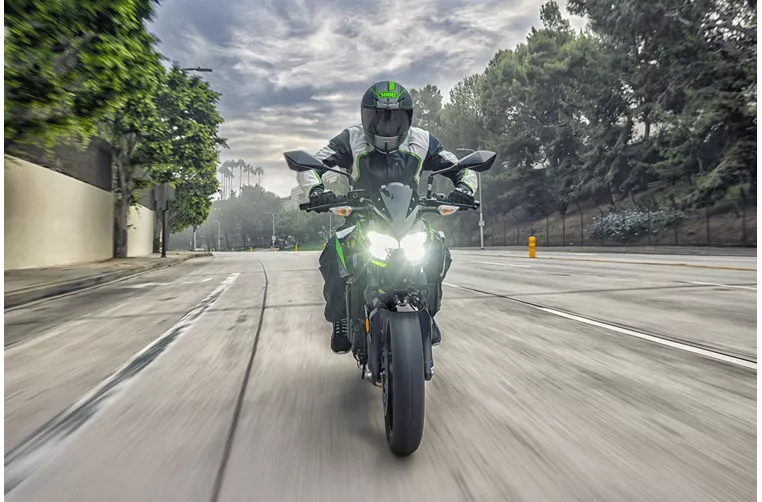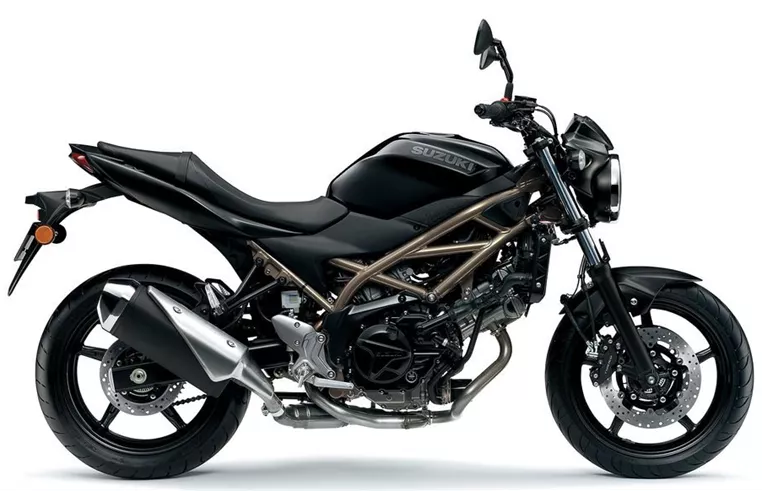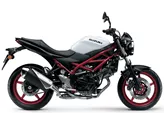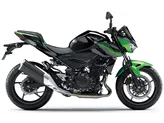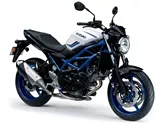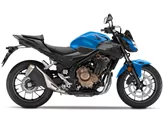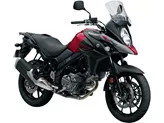Kawasaki Z 400 2023 vs. Suzuki SV 650 2021
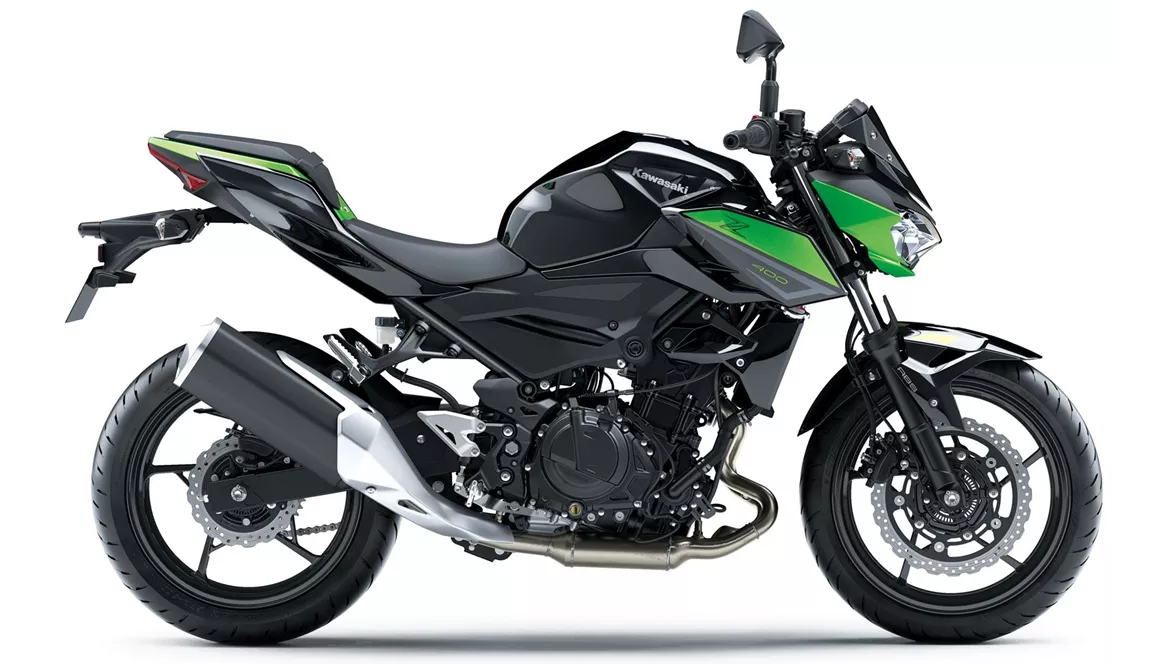
Kawasaki Z 400 2023
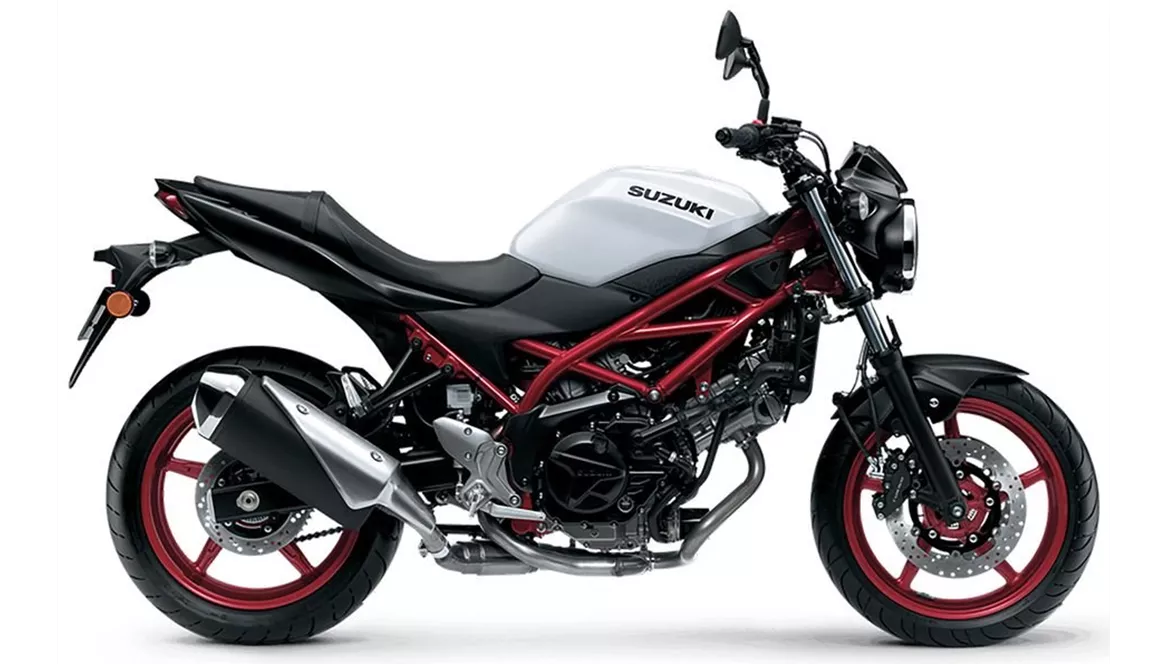
Suzuki SV 650 2021
Vue d’ensemble - Kawasaki Z 400 2023 vs Suzuki SV 650 2021
The Kawasaki Z 400 2023 and the Suzuki SV 650 2021 are both naked bikes that offer a thrilling riding experience. However, there are several differences between the two models that make them unique in their own ways.
In terms of engine performance, the Suzuki SV 650 2021 takes the lead with its V2 powerplant that delivers 73 HP of power and 64 Nm of torque. On the other hand, the Kawasaki Z 400 2023 offers a slightly less powerful engine with 45 HP of power and 37 Nm of torque. While the Suzuki SV 650 2021 provides a more powerful and characterful engine, the Kawasaki Z 400 2023 still offers a lively and enjoyable riding experience.
Both bikes feature a liquid-cooled engine and fuel injection systems, ensuring efficient and reliable performance. They also have a similar suspension setup, with telescopic forks at the front and a swing arm with a monoshock at the rear. The suspension on both models can be adjusted for preload, allowing riders to customize their riding experience.
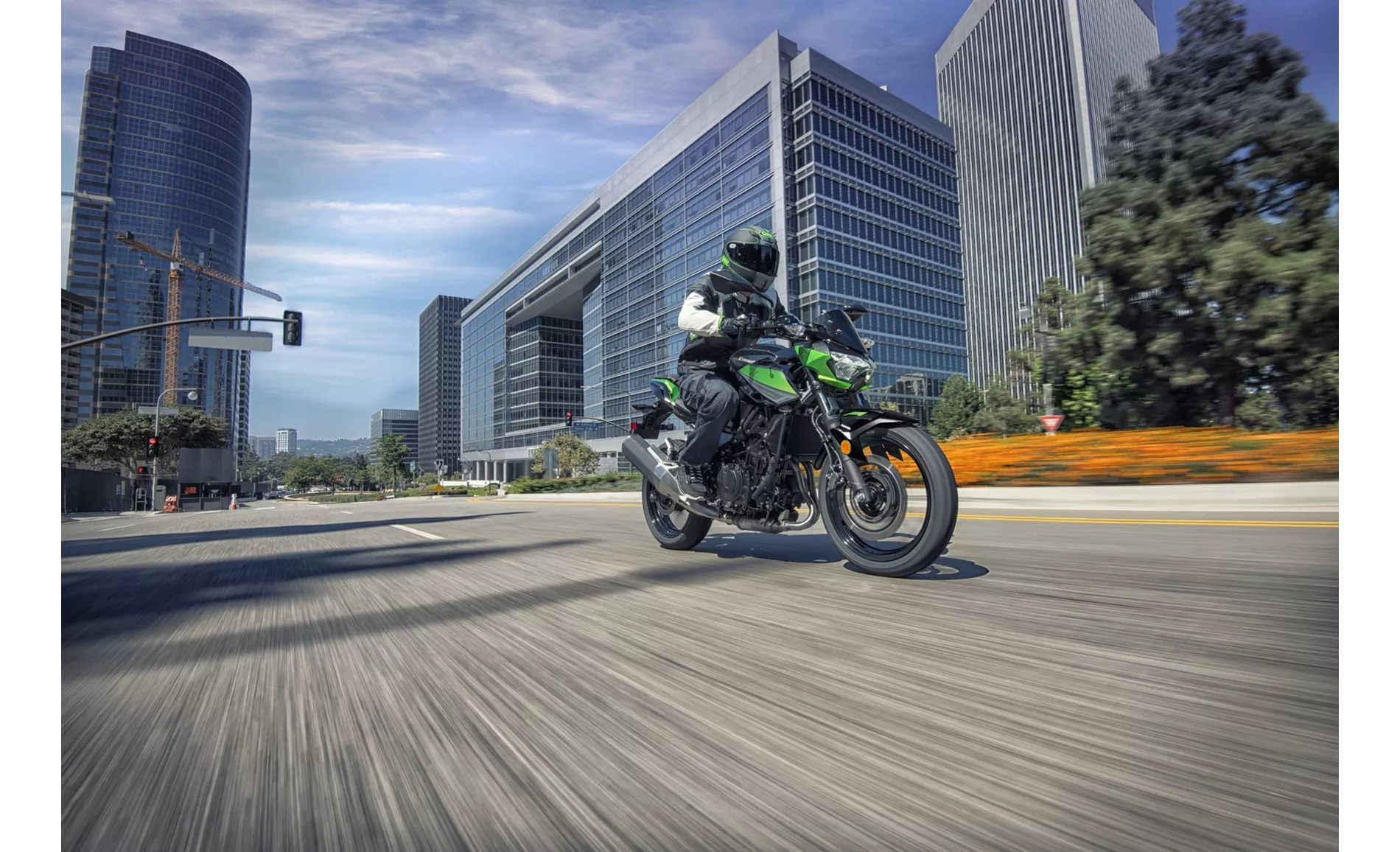
Kawasaki Z 400 2023
In terms of chassis, both the Kawasaki Z 400 2023 and the Suzuki SV 650 2021 feature a steel tubular frame, providing stability and durability. The Kawasaki Z 400 2023 has a slightly lighter weight with a kerb weight of 167 kg, while the Suzuki SV 650 2021 weighs 200 kg. This weight difference may contribute to the Kawasaki Z 400 2023's easy handling and maneuverability.
When it comes to braking, the Suzuki SV 650 2021 has the advantage with double disk brakes at the front, compared to the Kawasaki Z 400 2023's single disk brake. The Suzuki SV 650 2021 also has four-piston calipers, providing stronger braking power. However, both models are equipped with ABS, ensuring safe and controlled braking.
In terms of dimensions, the Suzuki SV 650 2021 has a longer wheelbase of 1445 mm compared to the Kawasaki Z 400 2023's 1370 mm. This longer wheelbase may contribute to the Suzuki SV 650 2021's stability at higher speeds. Both bikes have the same seat height of 785 mm, providing a comfortable seating position for riders of various heights.
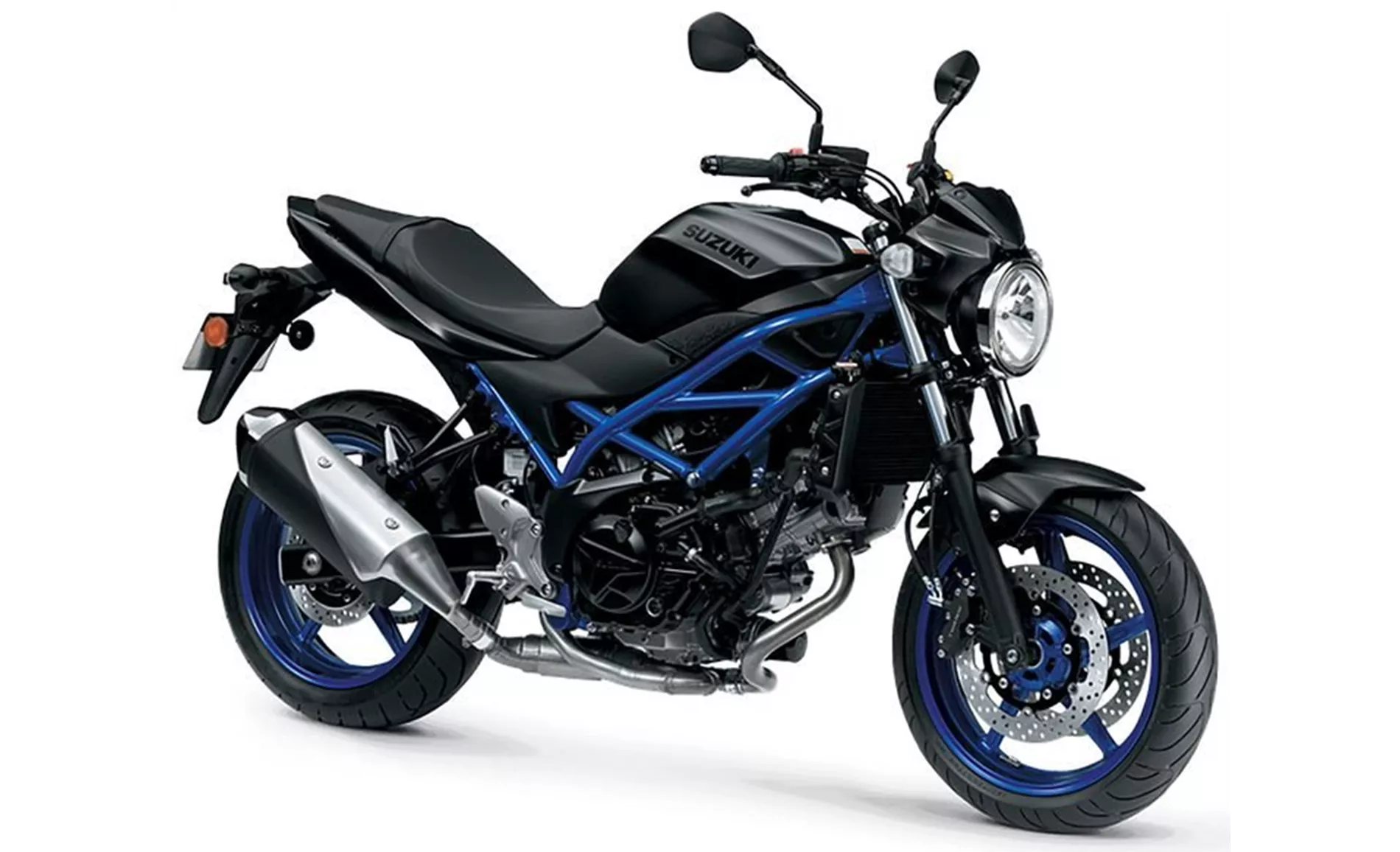
Suzuki SV 650 2021
In terms of aesthetics, the Kawasaki Z 400 2023 has a more grown-up look, while the Suzuki SV 650 2021 has a timeless design. Both bikes are well-crafted with high-quality workmanship, ensuring durability and longevity.
In terms of weaknesses, the Kawasaki Z 400 2023 has non-adjustable levers, which may limit customization options for riders. On the other hand, the Suzuki SV 650 2021 has a brake that requires manual force, which may be less convenient for some riders. Additionally, the Suzuki SV 650 2021 lacks advanced electronics apart from ABS and its instruments are moderately readable.
In conclusion, both the Kawasaki Z 400 2023 and the Suzuki SV 650 2021 offer exciting riding experiences with their powerful engines, stable chassis, and easy handling. The Suzuki SV 650 2021 provides a more powerful engine and better braking performance, while the Kawasaki Z 400 2023 offers a lighter weight and a more grown-up look. Ultimately, the choice between the two models will depend on the rider's preferences and priorities.
Caractéristiques techniques Kawasaki Z 400 2023 par rapport à Suzuki SV 650 2021
Avantages et inconvénients en comparaison
Avantages et inconvénients en comparaison
Kawasaki Z 400 2023
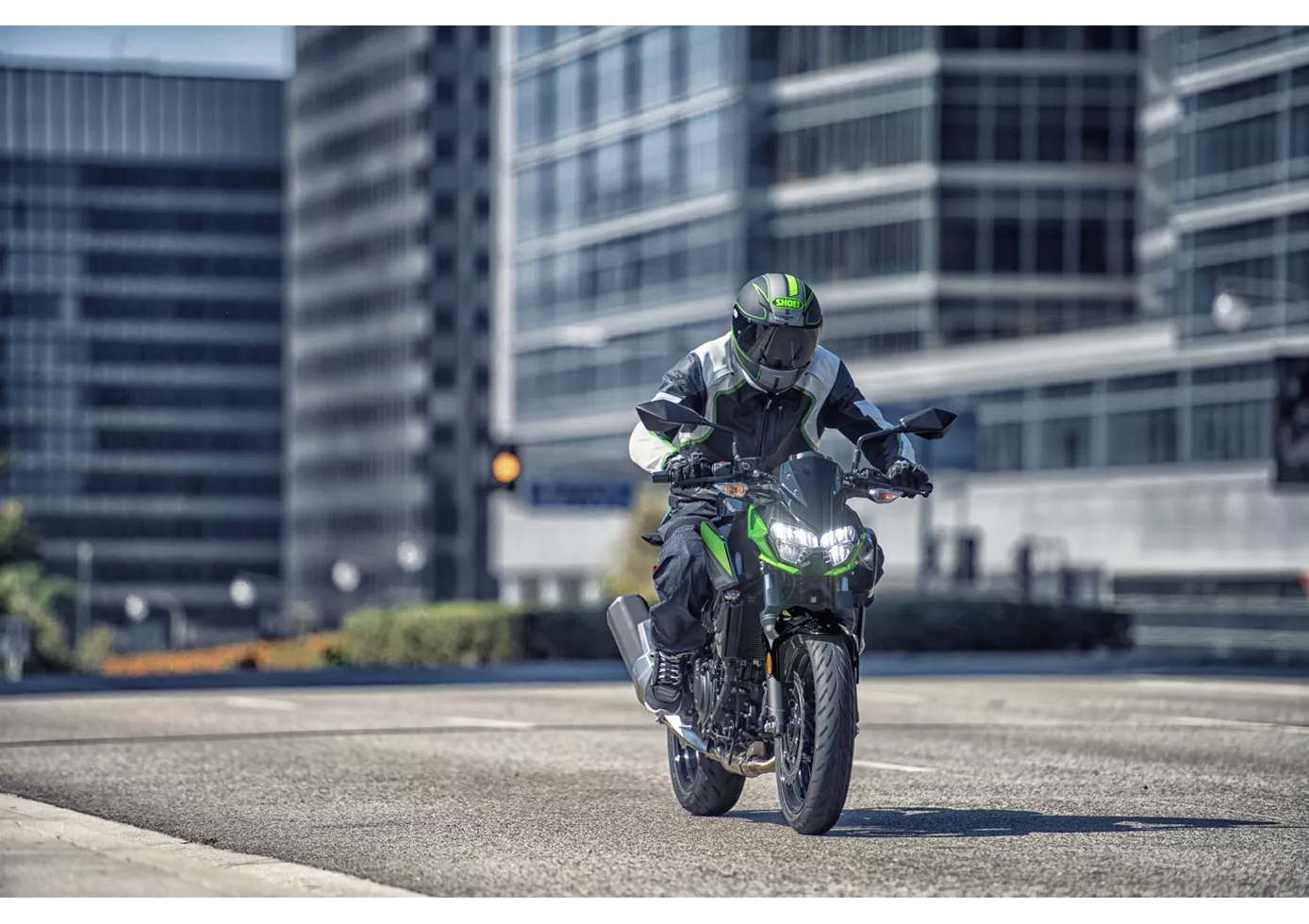
Une entrée cool et raisonnable dans la catégorie A2. La Kawasaki Z400 marque des points sur toute la ligne avec sa conduite instinctive et son bicylindre en ligne qui convainc par sa bonne réactivité et sa puissance suffisante. Avec cette moto naked, on ne peut pas se tromper et le fait que les leviers ne soient pas réglables peut être oublié - après tout, il faut bien faire des économies quelque part.
Suzuki SV 650 2021
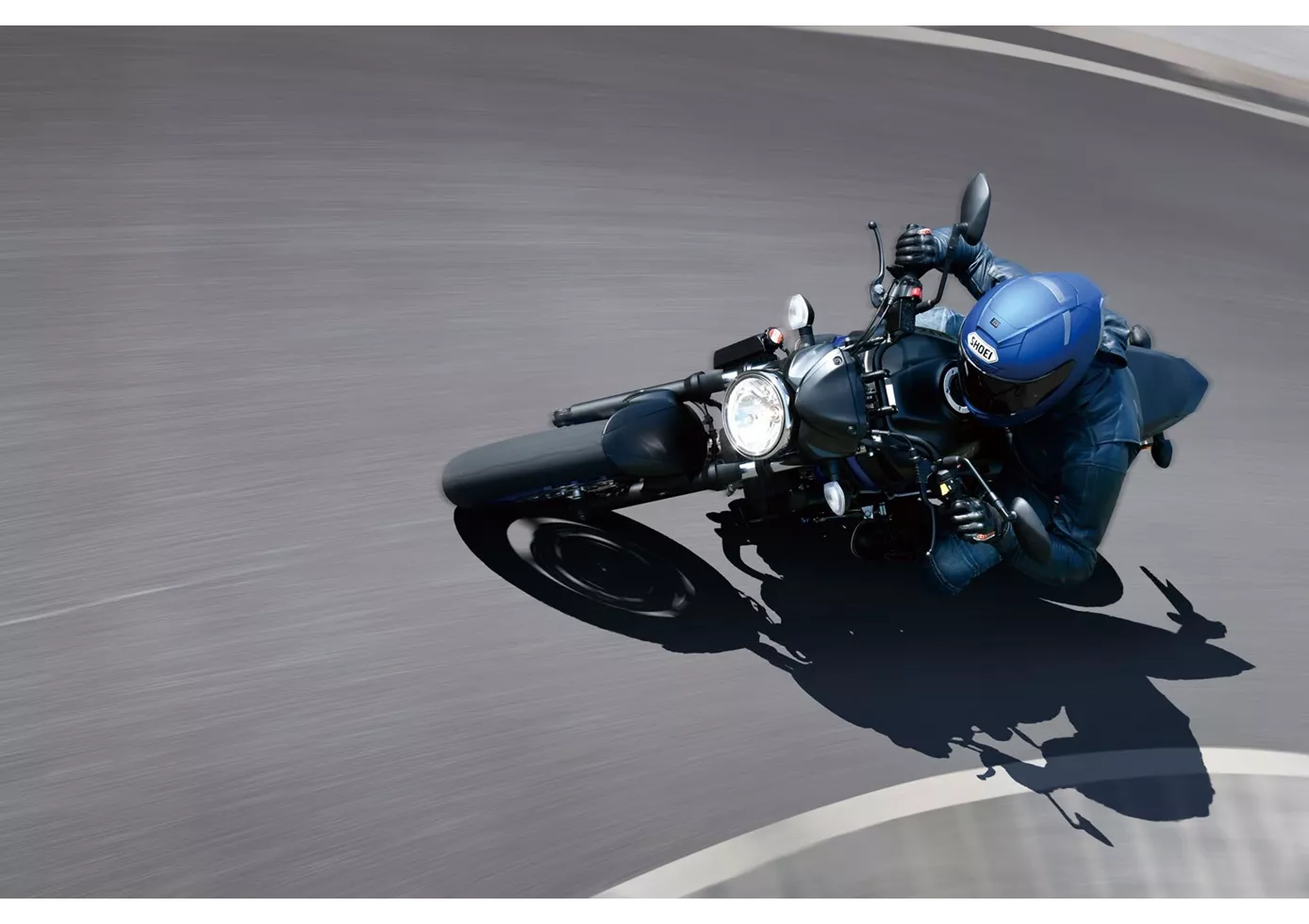
La Suzuki SV 650 n'a pas beaucoup évolué depuis cinq ans par rapport à son prédécesseur. Le moteur a été mis à jour selon la norme Euro5 et se présente désormais de manière encore plus adulte, ce qui lui permet de s'intégrer parfaitement au reste du package. La SV 650 ne veut effrayer personne, surtout pas les débutants. Le châssis donne une impression de solidité et de sérénité, le frein demande une bonne force manuelle pour éviter un surfreinage inattendu. L'optique est d'une part intemporelle, mais d'autre part vraiment un peu dépassée sur certains composants. En revanche, le prix est correct, comme d'habitude chez Suzuki.
Comparaison des prix Prix moyen du marché Kawasaki Z 400 vs Suzuki SV 650
There are a few key differences between a Kawasaki Z 400 2023 and a Suzuki SV 650 2021. In terms of price, the actual average prices of both motorbikes are almost the same. Compared to Suzuki SV 650 2021 there are more Kawasaki Z 400 2023 bikes available on the 1000PS.de Marketplace, specifically 89 compared to 13. It takes less time to sell a Suzuki SV 650 with 111 days compared to 123 days for the Kawasaki Z 400. Since model year 2019 1000PS.de editors have written 8 reviews for the Kawasaki Z 400 and 25 reviews for the Suzuki SV 650 since model year 2005. The first review for the Kawasaki Z 400 was published on 10/2/2018 and now has more than 23,200 views. This compares to more than 14,200 views for the first review on Suzuki SV 650 published on 9/26/2008.
